2023 is the 50th anniversary of SEGD, the Society for Experiential Graphic Design. This year's SEGD conference aimed high with three days of talks, networking and tours in Washington DC. Over 600 people from around the world attended; the largest attendance in the history of the event. The conference also saw the unveiling of the organisation's new branding and website.
Each day of the SEGD conference had a different theme: reflect, reframe and reignite. The sessions looked back at where SEGD began, explored what it means to be an experiential graphic designer today and then looked ahead at where the industry could go.
Amongst the talks, there were plenty of networking events. These included the SEGD President’s Reception & Auction for Excellence which saw $50,000 raised to help support SEGD programming and Emerging Experiential Professionals (EXP) events. On the second day, Mad Systems sponsored the NEXPO Reception drinks before the winners of the SEGD Global Design Awards were announced.
And the final evening saw a closing party, sponsored by Electrosonic, Color-ad, Explus and MGAC, at Secret Walls. Attendees were treated to a live art battle, with two teams of local DC artists competing to create art themed to the SEGD conference. With a DJ setting the scene, attendees spent the night cheering on the artists and dancing the night away.
New branding revealed at SEGD conference
Welcoming attendees to the conference, Cybelle Jones, CEO of SEGD, said that "our shared language is experience". In redoing the SEGD logo and website it was important to reflect on the history of SEGD as well as look at the future of experiential design and what SEGD members need from the organisation.
The previous SEGD logo was designed by Pentagram in 2010 and was made to highlight the global design aspect of the organisation. In redoing it, Michael Gericke, partner at Pentagram, explained that it was important to look at how SEGD presents itself. The goal was to create a unique and comprehensive brand identity to "portray the essence of who we are and what we do and believe in".
The primary position of SEGD is now 'designers of experiences' to show that its members are not just thinking about signage, but instead experiences as a whole. The secondary position is 'connecting people to place'.
Pentagram also worked on new logos for all of the SEGD programs. This includes the Global Design Awards and EXP and provides unity across the organisation. Finally, the new website is easier to read, and "has a presence that feels like our work as designers".
Nu Goteh is co-founder of Room For Magic, the company that helped to put new content on the SEGD site and worked on its brand narrative. He said that "all roads lead to experience design" if you are a designer. Furthermore, "your goal is to help people understand and contextualise the world".
SEGD past and present
Rich Burns and John Berry, both SEGD founders, Fellows and past presidents, then spoke to conference attendees about how SEGD came to be. Berry explained that there was no concept of the design profession 50 years ago. The most creative solutions arrive when architects, graphic designers, fabricators and more work together. Now, it is common for designers to take the lead and become the heart of a project which is a positive thing.
Burns talked about how SEGD creates a sense of professional recognition and acceptance. Discussing the future of the industry, he spoke about the new MSG Sphere. For Burns, this is "quite an achievement" that "may become SEGD's new mecca". "I can find nothing better than this that represents our future" he continued, given its innovative design combining audio, visual and more to create an extraordinary experience.
The next talks showcased the importance of SEGD members and design in building Washington DC. Wayne Hunt, founder of Hund Design and a SEGD Fellow, spoke about designing the wayfinding experience on the National Mall 12 years ago. Lance Wyman, principal of Lancy Wyman Ltd and SEGD Fellow explored designing the Washington DC metro maps, whilst Laurent Odde, program manager, Art in Transit, WMATA spoke about bringing art to the Washington metro system.
Designing with purpose
Several sessions during this SEGD conference spoke about how vital it is to design with purpose. Llisa Demetrios, chief curator of the Eames Institute and granddaughter of Ray and Charles Eames spoke about how Ray and Charles came to a design with a strong sense of purpose and need. When they were asked to redesign airport chairs, they first asked what was wrong with the existing design.
By speaking to those who had to fix the chairs, they were able to design something with easily replaceable parts. This ensured they endured. The Eames Institute tells the story of Ray and Charles' design process through many different prototypes.
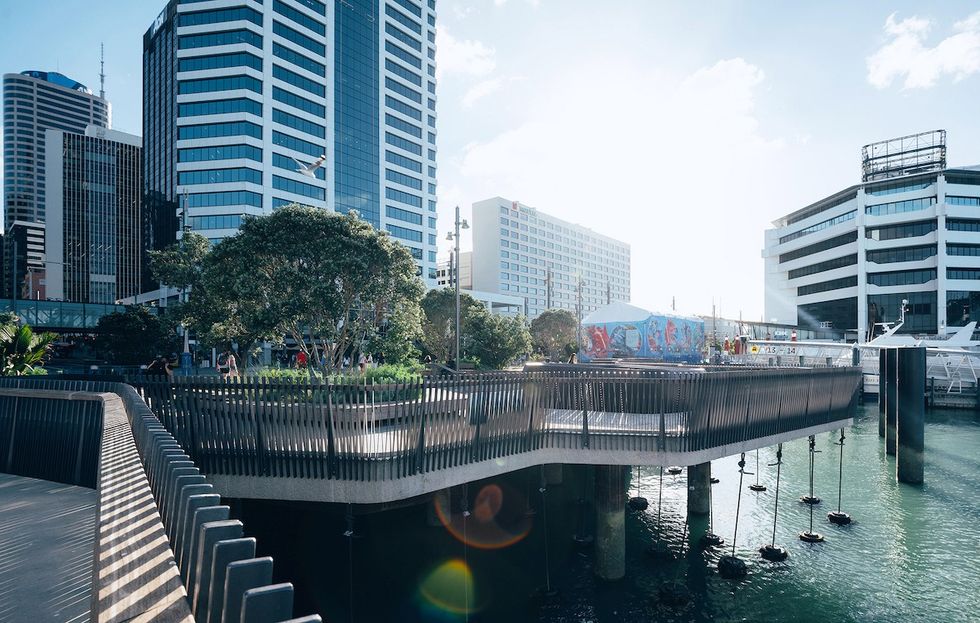
The SEGD Global Design Awards Best in Show 2023 was Te Wānanga. Nick Kapica, formerly with Isthmus, spoke about this special project. For Isthmus, purpose is fundamental to its designs. Their aim is to regenerate New Zealand and connect place, people and culture through design.
This project was part of a larger regeneration project for Auckland. It involved creating a tidal shelf for both people and coastal ecologies. The project aimed to go from Auckland to Tamaki (the Māori word for Auckland). So they went back to look at Tamaki before it became Auckland, so they knew what to go back to. The result is a space that restores pre-colonial cultural connections with the site. It is now a location for people to meet up, explore, rest and play.
'Designers of experiences'
The Folger Shakespeare Library and Museum in Washington DC has the world's largest collection of Shakespeare's First Folios. And yet these 82 copies have previously been hidden away where no visitors could see them. Greg Prickman, director of collections at the library, spoke about a new project that is scheduled to open next year that will change this issue.
A new underground entrance with two new exhibition spaces will allow a broader range of visitors to view these folios. For Prickman, this project "builds a from door to the building. We know the library can be perceived as an intimidating space...so we're trying to address that".
Each of the 82 folios has a story of its past 400 years. “The challenge was to try and bring those stories out and present something to visitors that is on the one hand monumental, and then find a way to bring people into those stories and welcome curiosity and interest”.
Monica Coghlan, director of design at Studio Joseph and Beth Van Why, senior project manager of Becker & Frondorf worked on the project. They spoke about the challenges of the project, such as working with the large case the folios will sit in.
It was important for the team to allow visitors to interact with these folios and explore the details within them, such as writings and drawings made by previous owners. Visitors are able to view digital versions of the folios and take on different roles such as investigator, storyteller or historian.
Storytelling to move people to action
Chloe Louvouezo, senior communications officer, global creative content at the Bill and Melinda Gates Foundation spoke about how "context is crucial to the process of storytelling. And good storytelling remains grounded in the intention to understand more than the outcome to sell". For Louvouezo, the stories that we choose to share and the content we create informs the way people see the world and can cause behaviour change.
This is why we "have a duty to uphold the culture, language and legacy of those whose stories we tell". And in order to do that, you have to immerse yourself into a community in order to tell their story.
During this session at the SEGD conference, L'Rai Arthur-Mensah, project director of Local Projects, asked Louveouezo how we can use storytelling to move people to action.
She replied that "to encourage people to take action on a new idea and movement for them requires us to position storytelling so it's both a mirror and a window for people". You have to position people as the characters of the story rather than just observing it so that they care more about it.
Working with a community
This idea of working with the community to tell their story was also illustrated during the SEGD conference by Jarred Howard, CEO of the National Juneteenth Museum.
This museum is currently being constructed in Forth Worth, Texas. It is in a neighbourhood that has the lowest life expectancy rate and highest infant mortality rate in Texas. It has predominantly African-American residents. For Howard, those in this community need more than a museum and so the space has to be "intentionally purpose-driven".
The museum will have a business incubator, a food hall, a space for community meetings, a theatre and exhibition designs. It has been designed primarily as a community revitalisation project. The first thing they did in the project was have a 4-hour meeting in an old school with stewards of the community. For Howard, "if you're offering a solution you have to sit and listen to them". The design of the museum came about as a result of that meeting.
Exploring universal stories
Another museum that actively involved a community is the FLUGT Refugee Museum of Denmark. Claus Kjeld Jensen, director of the museum and Erik Bär, director of Tinker imagineers, a leading experience design and production agency, spoke about how important it was to speak to groups of refugees to know what they would like in the museum. This ensured it would accurately discuss their lives as refugees.
The museum is built on the site of one of Denmark's largest refugee camps from World War II. Yet it tells a universal story of refugees, spanning history. The museum goes from numbers to people. In one room, the visitor is confronted with media headlines about refugees to recordings of refugees the team spoke to about the museum. In another room, wire sculptures inspired by personal stories encourage visitors to sit beside them and hear their tales.
Diversity and decolonisation
Tré Seals, founder of Vocal Type, talked to SEGD conference attendees about how important diversity is within design.
Seals has spent his life designing; growing up he designed and sold tattoos, posters, yearbooks, CVs and more. After spending several years working on branding, where he learnt the importance of branding and typeface. However, he soon realised that although beautiful, everything was starting to look the same. In order to draw from a greater portfolio of design, the industry needs diversity. "Type can be a tool for education and sharing stories" he explained, "and stories are what connects us".
He founded Vocal Type and realised the positive impact it could have after the death of George Floyd. His fonts are inspired by key events throughout history. For example, his Eva font was inspired by banners carried by women in Buenos Aries demanding women's suffrage. His fonts are now being used for protests, movements and mainstream organisations like a men's clothing brand. For Seals, "diversifying design is shown by taking this font into a space that has nothing to do with the original history".
Dr Elizabeth Tunstall, former dean faculty of design at Ontario College of Art and Design University, Toronto spoke with Nu Goteh about decolonising design. Before moving into design, she had an extensive background in anthropology and is now a design anthropologist.
For Tunstall, this means exploring "what is the culture and histories around the things we make and what does that mean for the things we make". For her, decolonising design is making space for indigenous voices from around the world. Furthermore, it is vital to work with those communities to let them tell their stories.
Making design accessible
Peter Chang and Brandon Hill, founders of No Kings Collective spoke during the SEGD conference about their struggle to break into the art world.
No Kings Collective was started as a way of circumventing the established art world and making it more accessible. For them, art becomes a place for people to enjoy, and "if you build it, they will come".
They have also created art shows to reduce the barriers they experienced as emerging artists. At these art shows, all proceeds go back to the artists which is unprecedented in the art world. And they have been extremely popular, with their first show, Art All Night, attracting 9,000 people over 3 days.
SEGD Awards
On day two of the conference there was the 2023 Global Design Awards, with Solomon Group as presenting sponsors. Category sponsors were Archetype, ANC, Art Processors, Bluecadet, CREO Industrial Arts, Designtex and Peregrine OKB. There were 334 entries to the awards this year with 84 of those entries coming from outside the US.
Gary Solomon, co-founder and president of Solomon Group said that he is "profoundly proud to support the exceptional work of this community" as the presenting sponsor.
Winners included Wildwoods: Aglow at the Fernbank Museum, designed by Thinkwell Group which won an Honor Award in the Digital Experiences category. In the Exhibition category, Honor Awards were won by The FLUGT Refugee Museum of Denmark, designed by Tinker imagineers, won an Honor Award in the Exhibition category and The World of Stonehenge, designed by Ralph Appelbaum Associates.
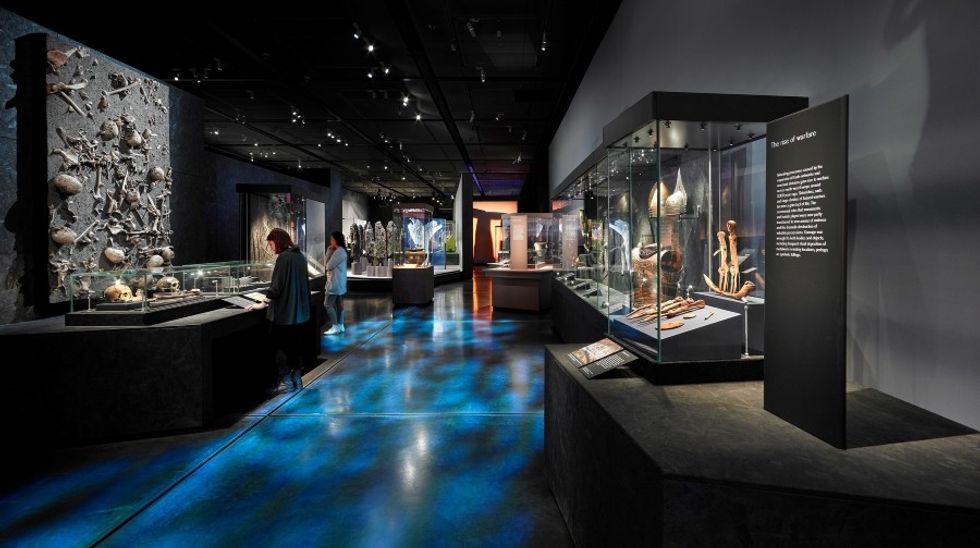
The next day, the SEGD Fellow and Achievement Awards were handed out. The 2023 SEGD Insight Award, for the clients who are behind impactful projects, was given the the National Museum of African American History and Culture. Wendy Evans Joseph, founder of Studio Joseph and Bruce Mau, CEO and co-founder of Massive Change Network, were the 2023 SEGD Class of Fellows.
Tours during SEGD conference
Attendees were treated to a variety of tours during the SEGD conference to places like The Smithsonian's National Air and Space Museum, the U.S. Capitol, Guinness Open Gate Brewery, Planet Word and more.
On the Planet Word tour, sponsored by Solomon Group, we heard from Ann Friedman, the founder of the museum. She wanted to do something to increase literacy rates in America. So she decided to create a museum about the power of words and language. It is in the old Franklin school building that was built in 1869. Therefore, many of the design choices were dictated by the size of the school and restoration requirements.
Solomon Group worked on the AV integration as well as fabrication for the museum. For them, working in the historic building was one of the biggest challenges for the AV side. For example, the low ceiling space was challenging for projectors. The museum also features one of the most complex automation programs Solomon has written.
The entire museum is designed to make learning about language fun, from the word wall which explains the history of the English language, to a library with projection mapping over the books.
NEXPO
At the NEXPO, companies like Mad Systems, Nanolumens, Daktronics and Moss all exhibited. There was also a series of NEXPO talks where companies could discuss their latest innovations for the experiential design community. Companies speaking included Omnivex, PAM, Image Options, Nanolumens, Gable and MOSS.
Anne Houghton and Elissa Decker from MOSS spoke about the company's commitment to sustainability from a fabrication point of view. They have a carbon-neutral facility and have created a tension fabric from marine plastic and post-consumer waste called SustainaTex Ocean. This material has been used by Levi and the Museum of the Bible.
Ross Hancock from Gable spoke about the work they did on replacing the iconic Domino Sugar sign in Baltimore. Hancock explained that this sign is like the Statue Of Liberty for those in Baltimore. "The impact of our work in the built environment impacts our communities". They didn't want to impose the 'right' idea of the new sign. Instead listened to the community to understand what was wanted and needed from the sign. This resulted in a new sign that is nearly an exact replica of the old one.
Then Dana Michaelis from Nanolumens spoke about the new Nixel series which allows for curved screens with a variable frame. This allows them to create immersive experiences like a video ring you can walk into. Other technologies can also be integrated to make these curved screens interactive with audio, haptics and more. He also spoke about how a big screen can often be just as immersive as a curved screen.
The SEGD conference was presented in partnership with Color-ad Signs and Exhibits, Nanolumens and Pentagram. The chairs were L’Rai Arthur-Mensah from Local Projects, Alexey Ikonomou from Ashton Design, and Cybelle Jones, SEGD CEO.
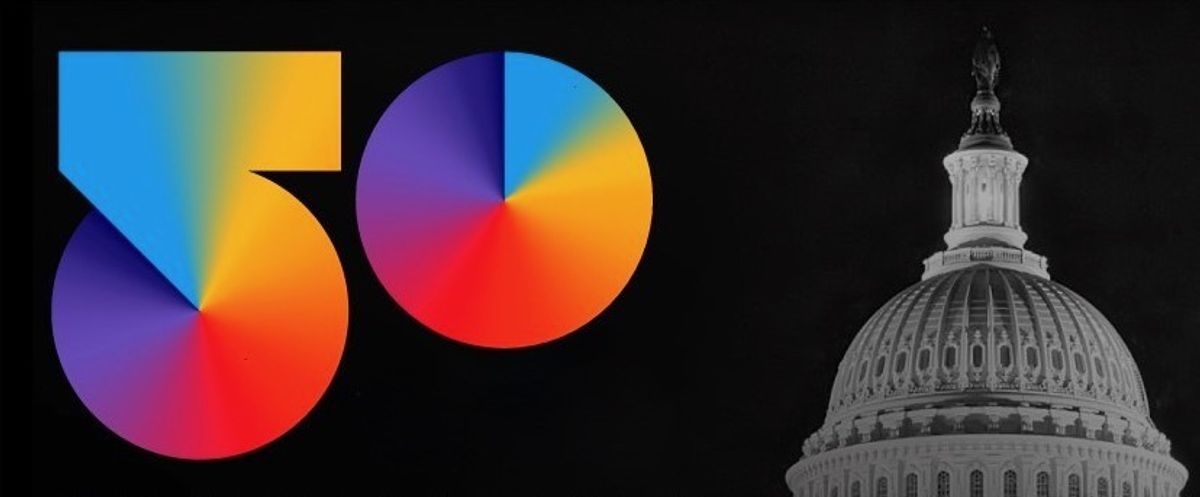

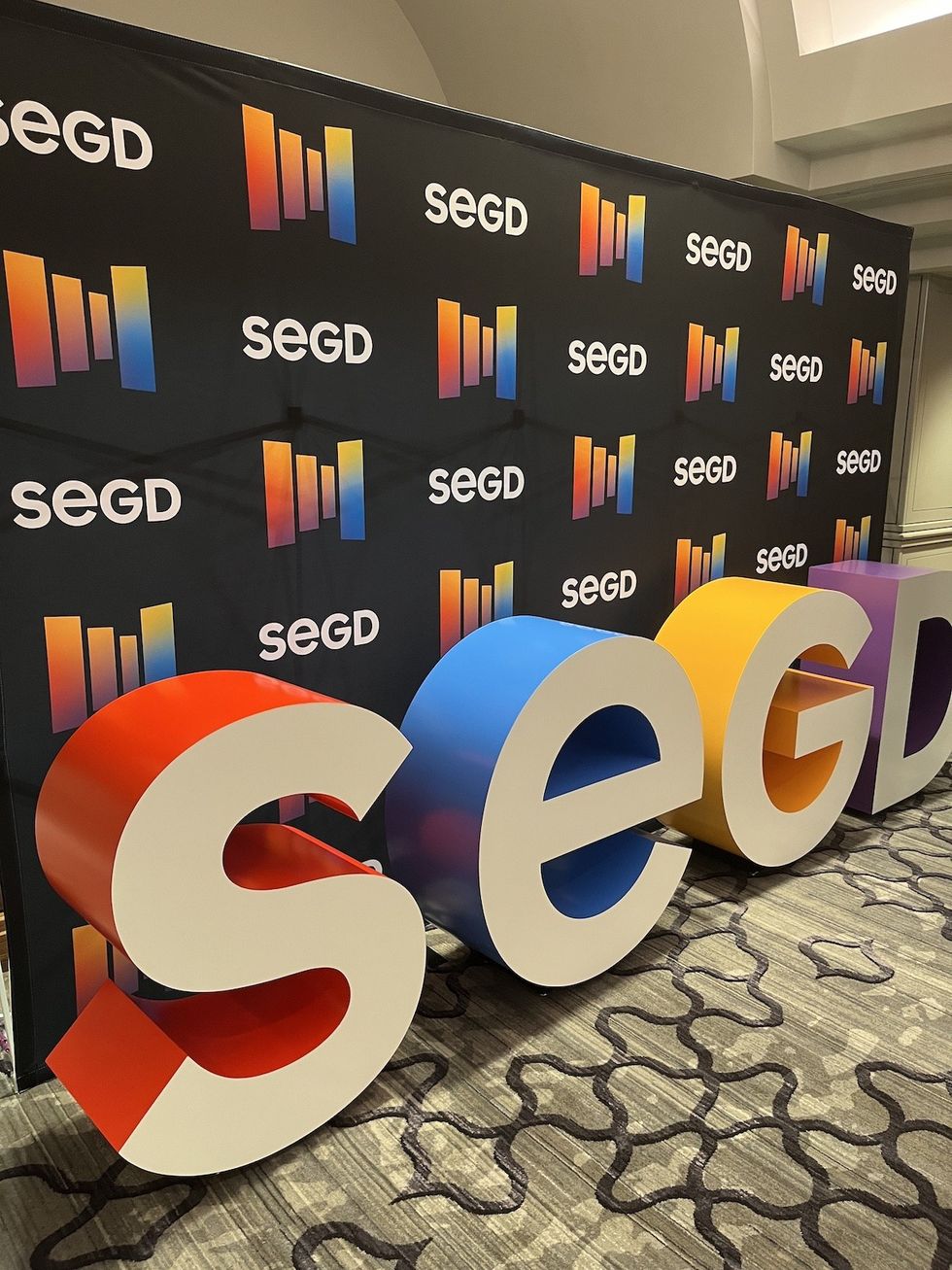
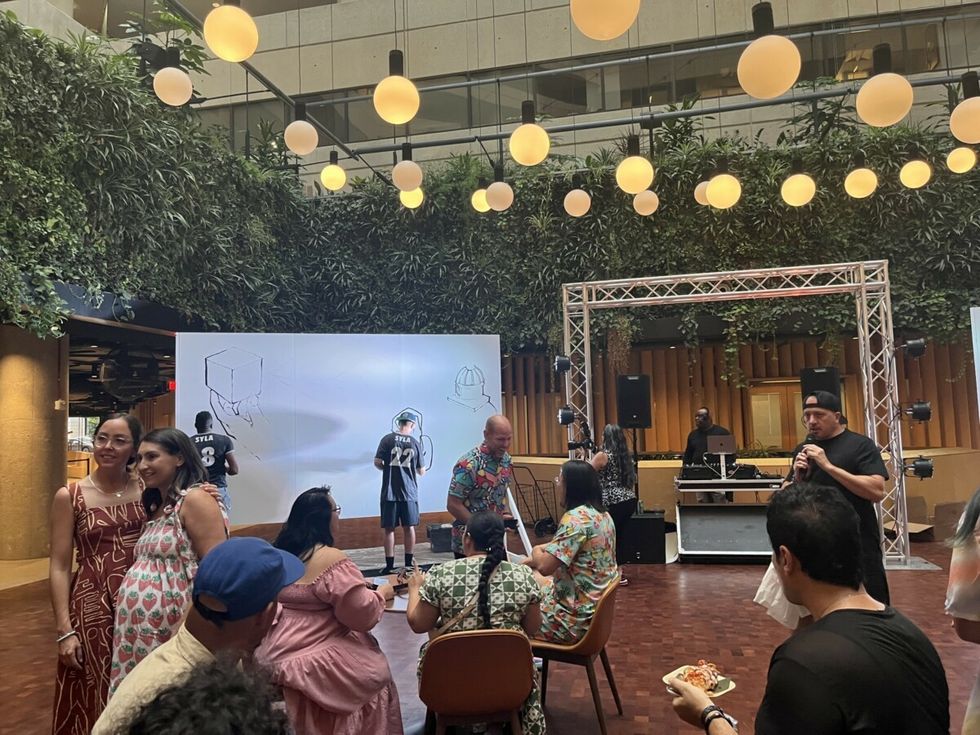

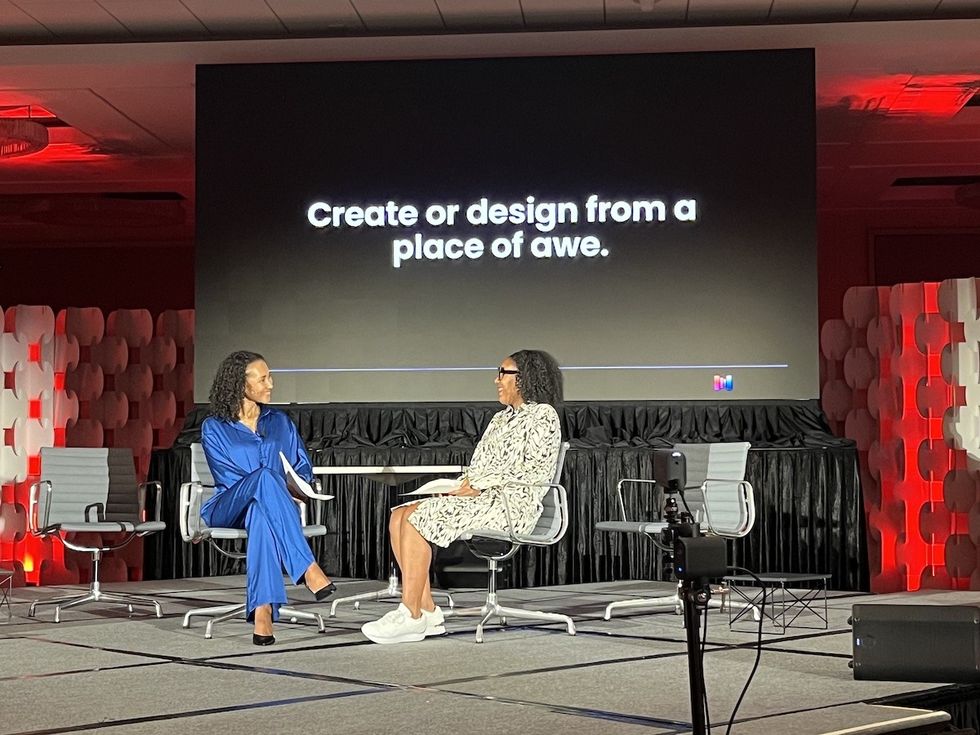
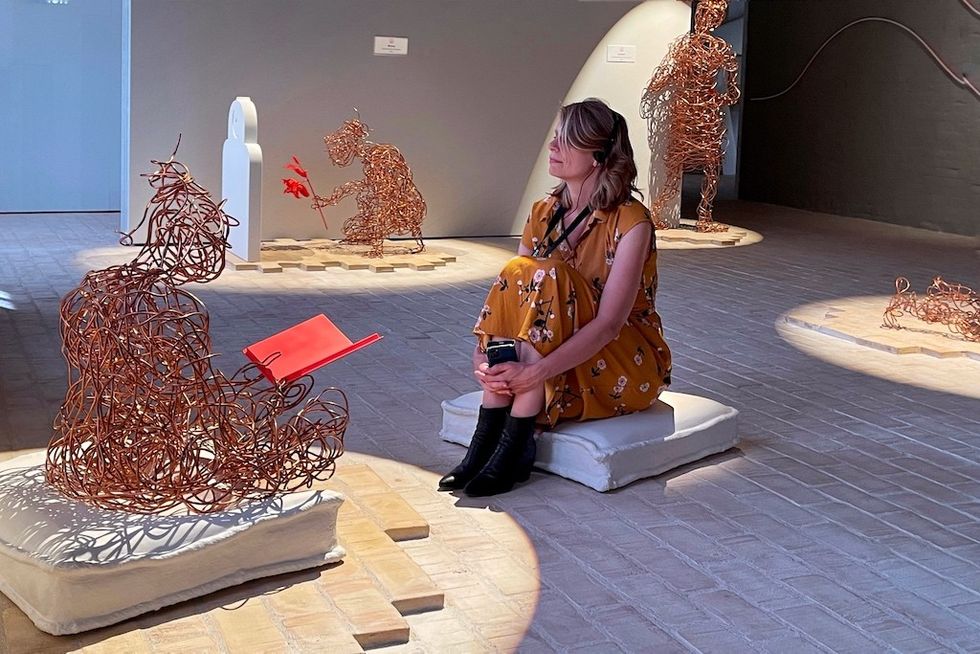
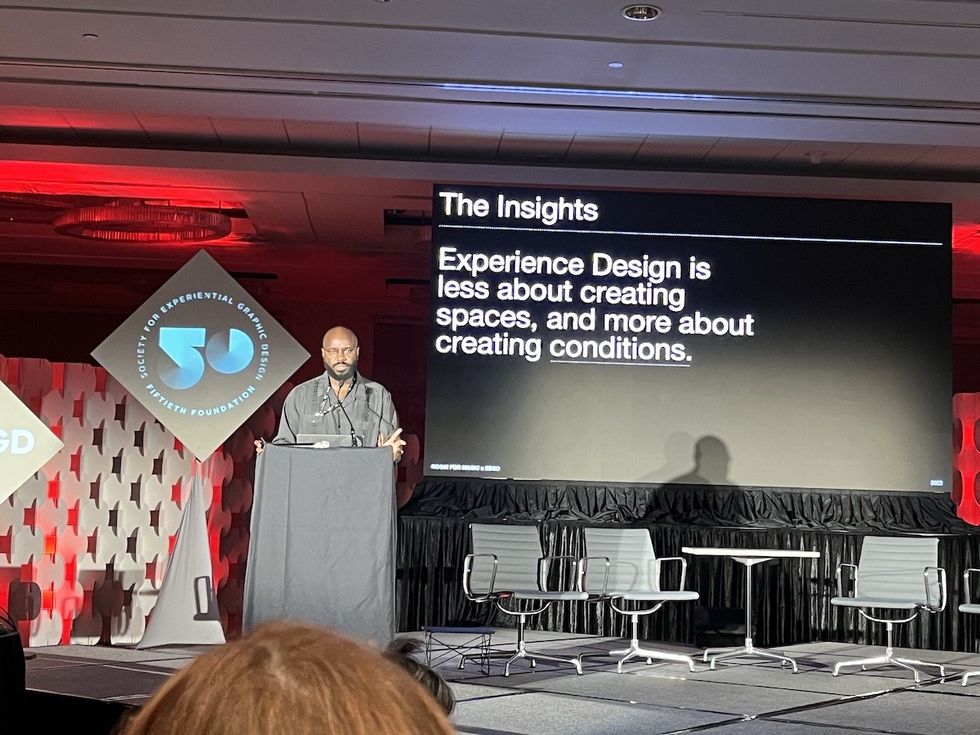
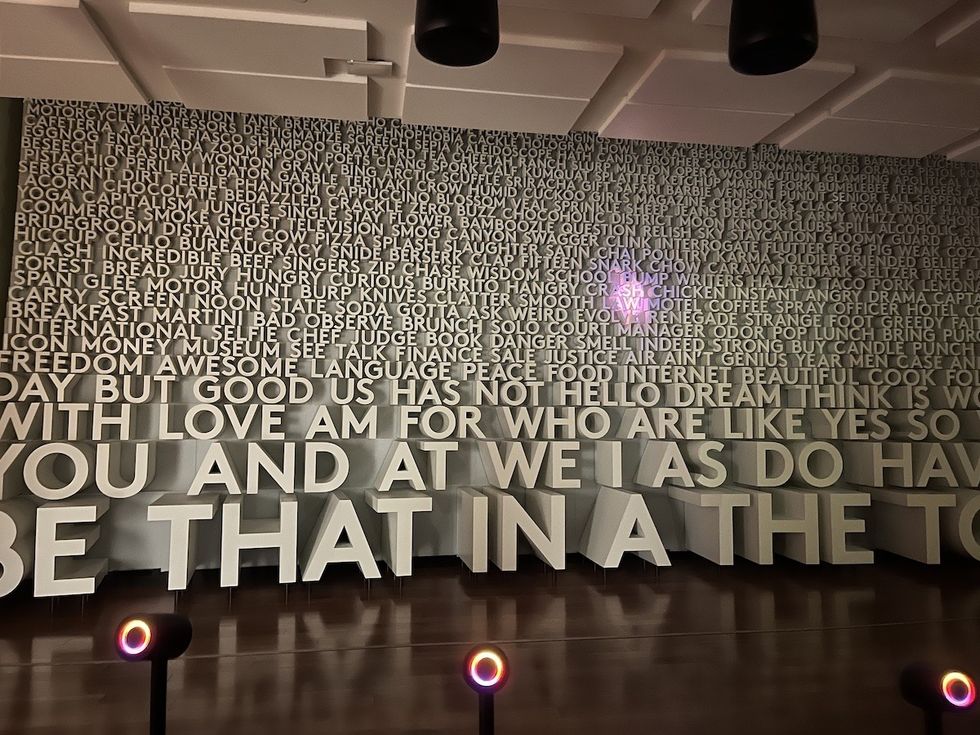









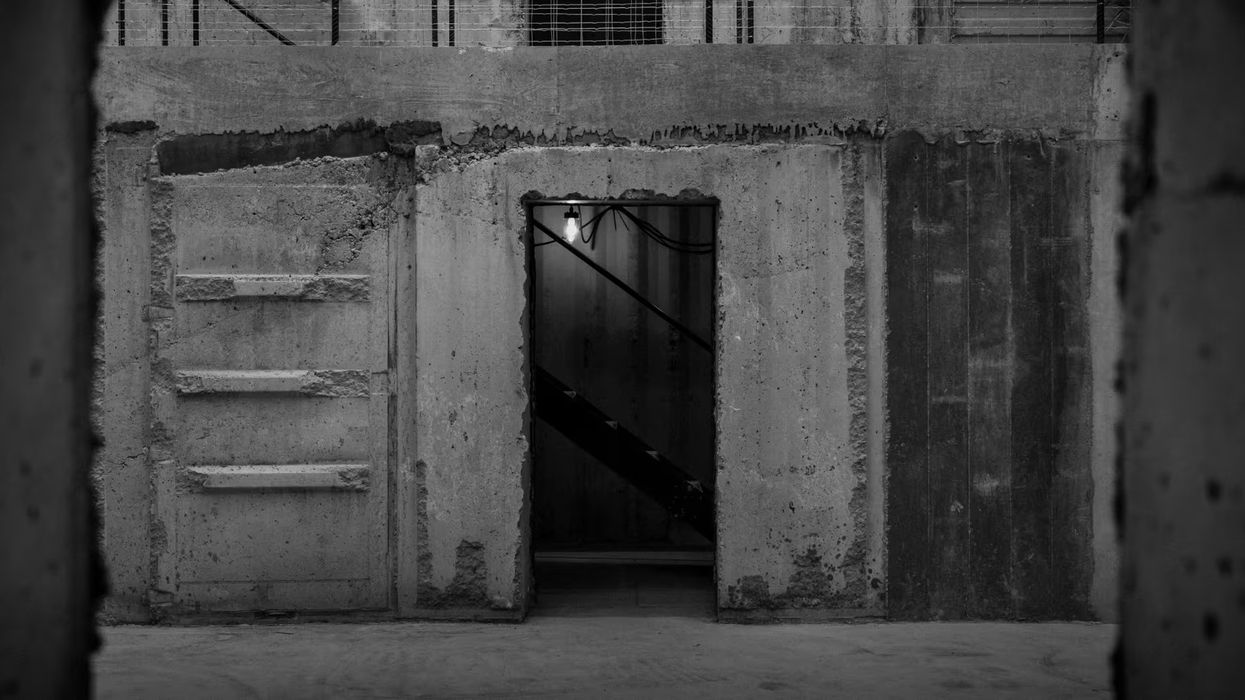



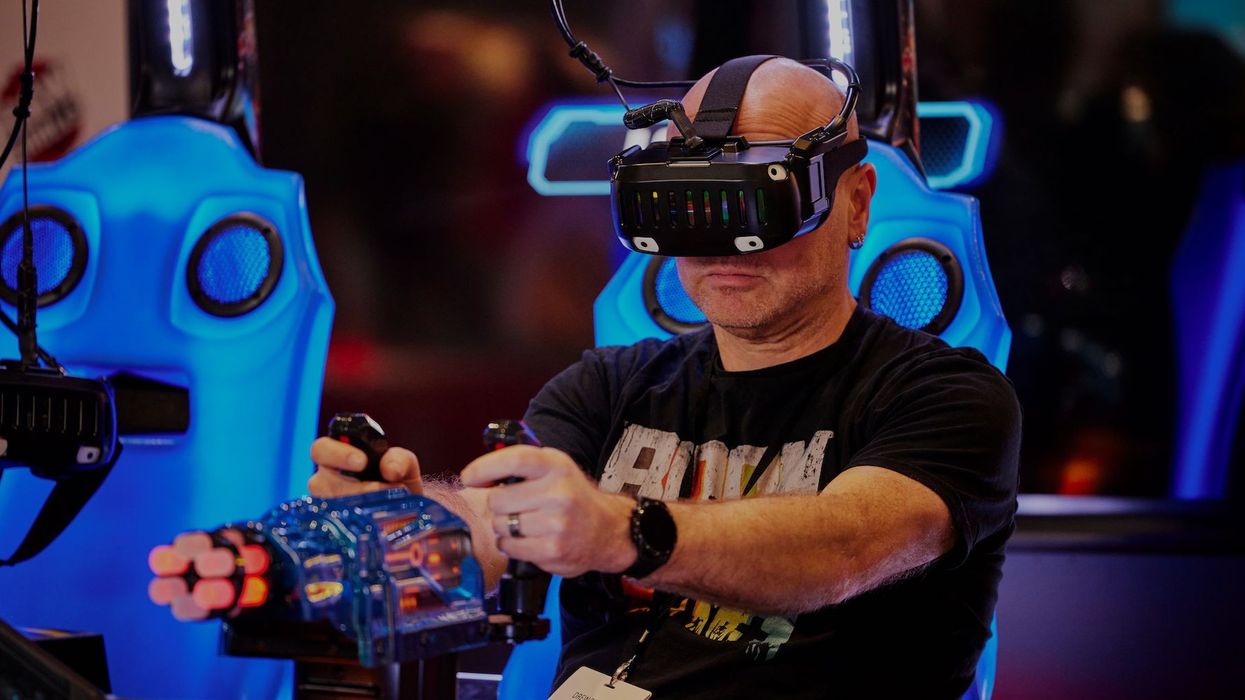
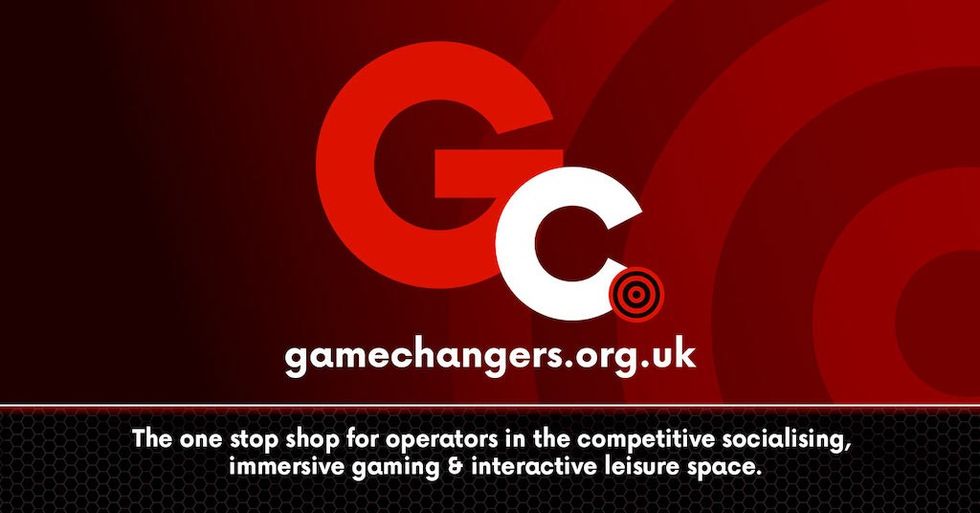
 Matt Eley and Sharon Dickinson
Matt Eley and Sharon Dickinson
 EAG Expo 2025
EAG Expo 2025
 Ballers Clubhouse Carlton
Ballers Clubhouse Carlton 








 TM Lim and Adam Wales
TM Lim and Adam Wales



 Toby Harris
Toby Harris Hijingo
Hijingo Flight Club, Washington D.C.
Flight Club, Washington D.C.
 Flight Club Philadelphia
Flight Club Philadelphia Flight Club Philadelphia
Flight Club Philadelphia Bounce
Bounce Hijingo
Hijingo Bounce
Bounce
 Fernando Eiroa
Fernando Eiroa











 Nickelodeon Land at Parque de Atracciones de Madrid
Nickelodeon Land at Parque de Atracciones de Madrid Raging Waters
Raging Waters  Mirabilandia's iSpeed coaster
Mirabilandia's iSpeed coaster Parque de Atracciones de Madrid
Parque de Atracciones de Madrid Ferracci at the ribbon-cutting ceremony for Nickelodeon Land at Mirabilandia, with (left) Marie Marks, senior VP of global experiences for Paramount and (cutting the ribbon) Sabrina Mangina, GM at Mirabilandia
Ferracci at the ribbon-cutting ceremony for Nickelodeon Land at Mirabilandia, with (left) Marie Marks, senior VP of global experiences for Paramount and (cutting the ribbon) Sabrina Mangina, GM at Mirabilandia Tropical Islands OHANA hotel
Tropical Islands OHANA hotel Elephants at Blackpool Zoo
Elephants at Blackpool Zoo  Tusenfryd
Tusenfryd